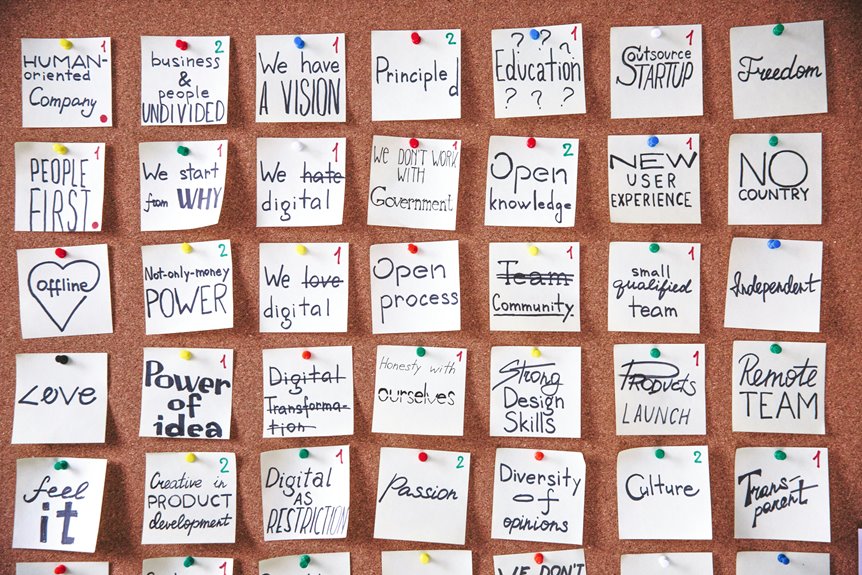Mastering Organizational Development 3274392685

Mastering Organizational Development 3274392685 presents a framework for leaders to navigate the complexities of change within their organizations. It underscores the critical connection between culture and strategic objectives. By integrating effective change management principles, organizations can cultivate resilience and adaptability. As they enhance employee engagement and assess their health, the potential for transformative growth emerges. However, the path to successful implementation raises further questions about the specific strategies that yield the best outcomes.
Understanding Organizational Development
Although many organizations strive for growth and efficiency, understanding organizational development (OD) is crucial for achieving sustainable transformation.
Effective OD requires a clear organizational structure that aligns with strategic goals and enhances change readiness.
The Importance of Organizational Culture
Organizational culture serves as the foundation for defining an organization’s identity and guiding its operational dynamics.
Its influence on employee engagement is profound, as a strong culture fosters alignment between individual values and organizational goals.
Understanding and strategically shaping this culture can significantly enhance overall performance and employee satisfaction.
Defining Organizational Culture
Culture serves as the invisible framework that shapes an organization’s identity and influences its overall effectiveness.
Understanding cultural dimensions is essential for analyzing how organizational behaviors align with strategic objectives. By fostering a collaborative environment that embraces diverse perspectives, organizations can enhance adaptability and innovation.
This alignment not only strengthens identity but also empowers individuals, ultimately promoting a sense of freedom and shared purpose within the workplace.
Impact on Employee Engagement
When an organization cultivates a robust culture, it significantly enhances employee engagement, fostering a work environment where individuals feel valued and motivated.
Strategic engagement strategies, such as recognizing achievements and promoting autonomy, are crucial for boosting employee motivation.
Aligning Values and Goals
A strong alignment between values and goals is essential for fostering an effective organizational culture.
By promoting value alignment, organizations can create goal synergy, allowing teams to work collaboratively towards shared objectives.
This synergy nurtures a sense of belonging and autonomy, empowering employees to contribute meaningfully.
Ultimately, aligning values and goals cultivates a vibrant culture that encourages innovation and drives sustainable success.
Key Principles of Effective Change Management
Effective change management is often governed by a set of key principles that guide organizations through transitions smoothly and successfully.
Central to this process are change readiness and resistance management, enabling leaders to cultivate an adaptable workforce.
Strategies for Enhancing Employee Engagement
How can organizations cultivate a culture of engagement that resonates with employees on multiple levels? Implementing team building activities and recognition programs fosters collaboration and appreciation, driving meaningful connections. Such strategies empower employees, enhancing their commitment and productivity.
| Strategy | Description | Impact |
|---|---|---|
| Team Building Activities | Collaborative tasks to strengthen bonds | Increases trust and morale |
| Recognition Programs | Acknowledging achievements and efforts | Boosts motivation and loyalty |
| Open Communication | Encouraging feedback and dialogue | Fosters transparency and trust |
| Flexible Work Arrangements | Adapting to individual needs | Enhances work-life balance |
| Professional Development | Offering growth opportunities | Promotes engagement and retention |
Tools for Assessing Organizational Health
In assessing organizational health, a strategic selection of tools is essential for obtaining meaningful insights.
Key Performance Indicators, Employee Engagement Surveys, and Cultural Assessment Tools serve as critical instruments for evaluating both quantitative and qualitative aspects of the workplace.
Utilizing these tools collaboratively can guide organizations towards informed decision-making and enhanced performance.
Key Performance Indicators
Key Performance Indicators (KPIs) serve as essential tools for assessing organizational health, providing measurable metrics that reflect overall performance and effectiveness.
These performance metrics enable organizations to evaluate success measurements, fostering strategic decision-making.
Employee Engagement Surveys
Effective organizational health assessment extends beyond KPIs to include tools like employee engagement surveys. These surveys facilitate insightful employee feedback, enabling organizations to gauge morale and commitment. A strategic survey design can enhance data quality, fostering a culture of collaboration and autonomy.
| Aspect | Importance |
|---|---|
| Employee Feedback | Drives engagement insights |
| Survey Design | Enhances response accuracy |
| Organizational Health | Promotes strategic growth |
Cultural Assessment Tools
Cultural assessment tools serve as essential instruments for evaluating the underlying dynamics of an organization’s health.
By employing cultural diagnostics and robust assessment frameworks, leaders can strategically identify strengths and weaknesses within their organizational culture.
This collaborative approach fosters a deeper understanding, empowering teams to navigate challenges and enhance overall effectiveness, ultimately promoting an environment conducive to freedom and innovation.
Implementing Continuous Improvement Practices
Continuous improvement practices are vital for organizations seeking to enhance efficiency and foster innovation.
By integrating process optimization techniques, organizations can streamline workflows while employing feedback loops to refine operations continuously.
This strategic approach not only empowers teams but also cultivates a collaborative environment where ideas flourish.
Embracing these principles enables organizations to adapt swiftly, ensuring sustained growth and operational excellence in a competitive landscape.
Conclusion
In the landscape of organizational development, envision a garden where diverse plants thrive through careful nurturing and adaptive pruning. Leaders, akin to skilled gardeners, cultivate a robust culture that fosters innovation and resilience. By implementing strategic change management and engaging employees as vital components of this ecosystem, organizations can flourish. Continuous assessment and improvement act as the sunlight and water, ensuring that this garden not only survives but also blossoms into a vibrant tapestry of success and sustainability.




